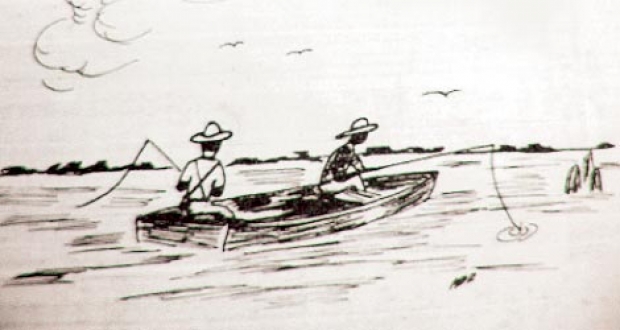Years before Tupperware parties or potlucks, Murrells Inlet’s male elite shared a common joy—food

Along the nineteenth-century banks of the Waccamaw River, Robert Francis Withers Allston, future governor of South Carolina, fished Murrells Inlet waters with his sister’s husband, John H. Tucker. The two belonged to a well-heeled group with a curious name, the Hot & Hot Fish Club of All Saints Parish.
Catchy title no doubt for a club dedicated to epicurean pursuits—main courses, side dishes, even silverware. And while the purpose of the club was to engender “society and conviviality,” such merriment commenced on the basis of one thing: the pursuit and pleasure of food. Unusual? Not especially. Except that the club was for men only.
Perhaps the notion of an all-male, nineteenth-century culinary meet-up is more interesting today (in our Food Network haze) than circa 1810, when the Hot & Hot Fish Club began. But one could surmise that this relatively calm period between the wars was up-tempo, the population of All Saints Parish concerned with plantation life and liberty. With this freedom and prosperity, along with the area’s rich waters, came an interest in recreational fishing—not to mention hunting other game. In the spirit of the times, parish members combined their interest in hunting with a zest for cuisine—all in the name of comradeship.
The group met on Fridays to fish all morning, then feasted after 1 p.m. on a formidable potluck of fish, beef, ham, local game, rice, side dishes, even “pudding,” as dessert was called. Boats would bring in two or three catches before meal’s end. Seasoned members knew that often the best catches came last and so would “save their palates” for a taste of those fish that were “hot and hot.”
The club, which grew from about eight members at its outset to twenty-eight before its dissolution during the Civil War, had its first clubhouse on the north end of Drunken Jack, a small island off of Murrells Inlet. There were a total of five clubhouses (due to weather and fire), the final an accommodating two-room structure, complete with a chimney, stove, and billiard table. With each new clubhouse came an initiation of new members.
What began as a small gathering for good food, hearty conversation, and prize catches evolved into a gentlemen’s club with a rulebook, yearly dues, and officers. And the club’s rules, instated in 1845, were as offbeat as its name. To join, each member had to pay an initial $50, then $5 annually. Each man served a term as president, and the president was responsible for furnishing “a ham and good rice.” In addition, the president selected side dishes for each game dish. The vice president brought water and ice, as well as a special dish and wine. Each member was responsible for bringing at least “one substantial dish,” as well as at least two dinner plates, two wine glasses, two tumblers, two knives, and two forks.
Though the Civil War put out the fire of the Hot & Hot Fish Club, history reminds that food was then—as it is today—a common denominator that brought people together. Though times have changed, we do not necessarily change with the times. We hold fast to our social systems, changing our appearances, our technologies, but never our desire to gather in the name of fellowship and a good meal.